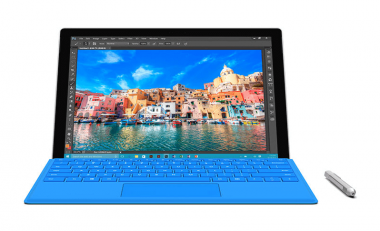Surface Pro 4 vs Surface Pro 3: How do Microsoft hybrids compare?

The Surface Pro 4 was recently announced and is set to release this Oct. 26. A report from Forbes points out the differences the new model has from its predecessor, the Surface Pro 3, and weighs in on whether or not consumers should consider upgrading to the newer model.
In terms of display, the Surface Pro 4 is slightly larger and has a much higher display resolution. The Surface Pro 3 had a 12-inch display and 2160 x 1440 native resolution while the newer Surface Pro 4 has a 12.-3-inch display and 2736 x 1824 native resolution, making it the superior choice.
There are also many peripheral upgrades such as the improved Pen which now has an "eraser" top and the upgraded touchscreen which is far more responsive and sensitive compared to the Surface Pro 3. Type Covers have been upgraded and the device weighs approximately 30 grams less than the bulkier Surface Pro 3.
However, the biggest difference is in the Surface Pro 4's power. The device is now offered to have up to 16 GB of RAM and 1 TB SSD, with the newest feature allowing consumers to expand the device's RAM to their needs. Also built into the device is the brand new Intel Skylake processor lineup, which starts at the M3 to the more powerful i7.
The only complaint from the report is that the Surface Pro 4 does not have USB Type-C support and it lacks 4G/LTE connectivity, a feature that is widely accepted to be a must-have for convenient online connection.
In terms of price, the Surface Pro 4 is more expensive which is to be expected given that it is the newer and more powerful device. The lowest tier model, the 128-GB Surface Pro 4 with Intel M3 CPU and 4 GB RAM costs $899 while the highest tier model, the 512-GB Surface Pro 4 with Intel i7 and 16 GB RAM costs $2,199.
While the device won't be available until Oct. 26, pre-orders are now available.











